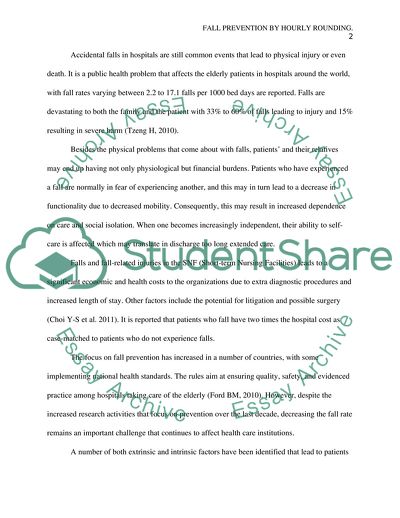EBP Design Proposal Research Example | Topics and Well Written Essays - 500 words. https://studentshare.org/nursing/1865623-fall-prevention-by-hourly-rounding
EBP Design Proposal Research Example | Topics and Well Written Essays - 500 Words. https://studentshare.org/nursing/1865623-fall-prevention-by-hourly-rounding.


